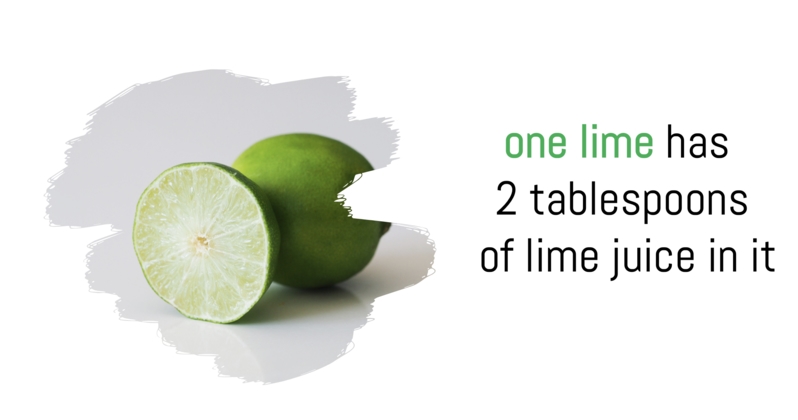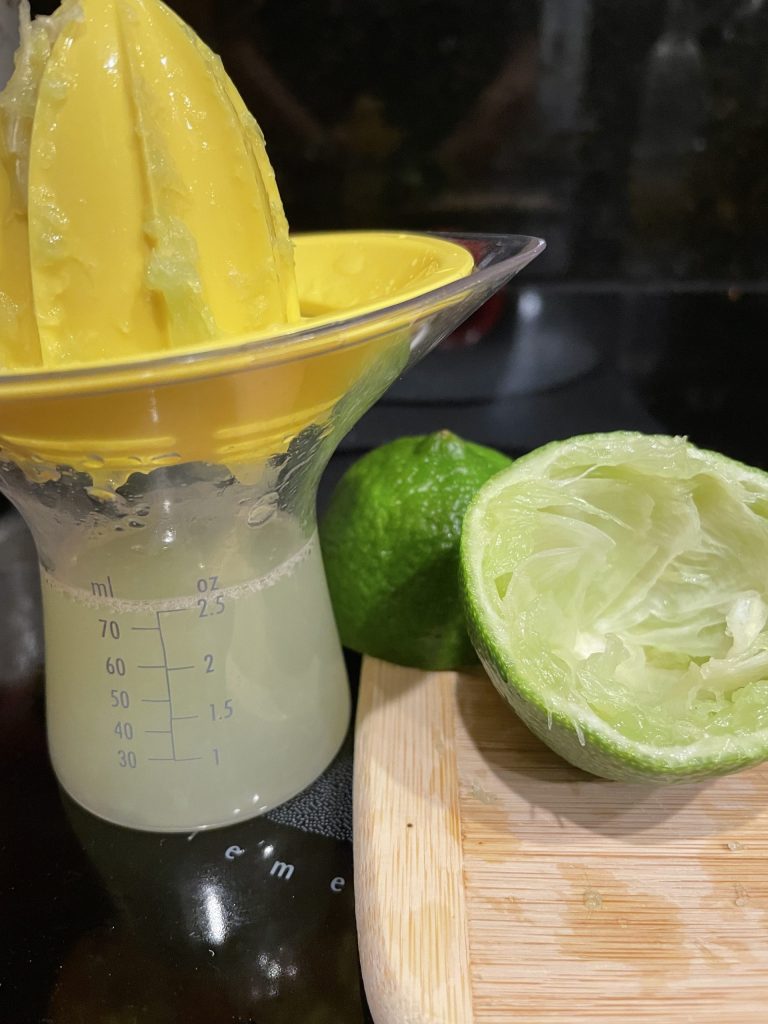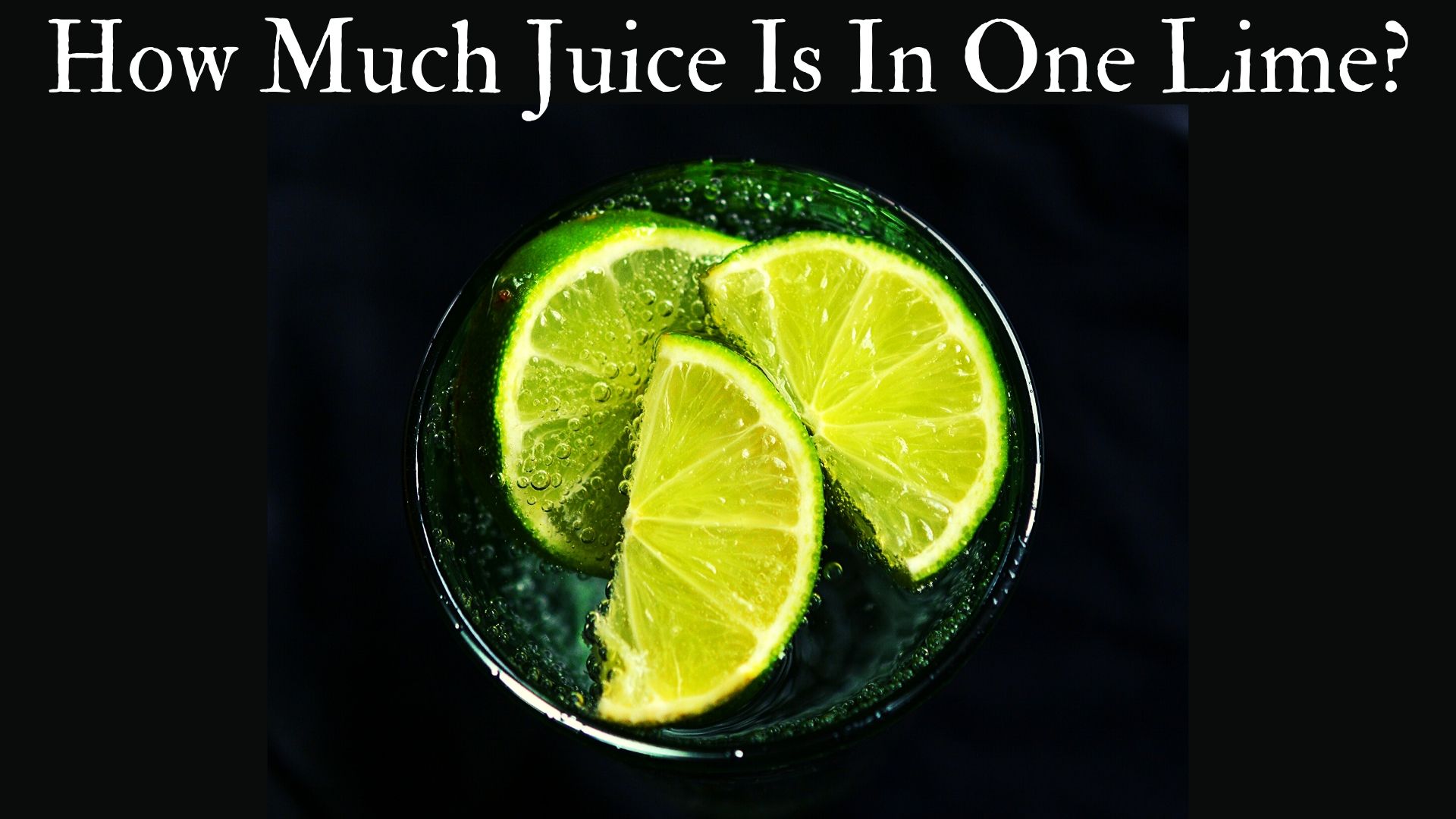When adding a burst of zesty flavour to your dishes or refreshing beverages, limes are a go-to choice for many. But have you ever wondered exactly how many ounces of juice in a lime you can extract?
In this article, we’ll delve into the world of citrus and reveal the secrets behind how many ounces of juice you can typically squeeze from one lime. Whether you’re a culinary enthusiast or simply curious, understanding this critical measurement can elevate your cooking and beverage crafting to a new level.
How Many Oz Of Juice In A Lime?

There are approximately 1 to 2 ounces of juice in a lime. The amount of juice can vary depending on the size and juiciness of the lime. Limes are small citrus fruits known for their tart and acidic flavour. They are commonly used in cooking, baking, and cocktail recipes to add a refreshing and tangy taste. To extract the juice from a lime, it is typically cut in half and squeezed using a citrus juicer or by hand. The juice can be used in various culinary applications, such as marinades, dressings, beverages, and desserts.
Related: How Many Ounces of Juice in a Lime: Unlocking the Citrus Secret
List Of Limes With High Juice Yield
Regarding limes with high juice yield, several varieties are known for their abundant juice content. These limes are widely used in culinary applications, beverages, and even for medicinal purposes.
Below is a list of limes with high juice yield:
- Persian lime
- Key lime
- Bearss lime
- Kaffir lime
- Finger lime
- Tahiti lime
- Australian round lime
- Rangpur lime
- Sweet lemon-lime
- Makrut lime
Comparing Lime Juice Yeild To Other Citrus Varieties
Factors Influencing Lime Juice Yield

Factors influencing lime juice yield can vary depending on the variety, fruit maturity, processing techniques, and environmental conditions. These factors are crucial in determining the quality and quantity of lime juice.
Lime Variety
Different lime varieties have varying juice content and acidity levels. Some lime varieties are specifically cultivated for their high juice yield, while others may be preferred for their flavour or aroma. Varieties such as Persian limes (Citrus latifolia) are commonly used for commercial juice production due to their high content.
Fruit Maturity
The stage of fruit maturity at the time of harvest significantly affects the juice yield. Limes that are harvested when they are fully mature tend to have higher juice content compared to underripe or overripe fruits. Harvesting limes at the optimal stage of maturity is essential to maximize juice yield.
Processing Techniques
The methods employed during lime processing can also impact the juice yield. Factors such as extraction method, equipment used, and processing temperature can influence the amount of juice extracted from the fruit. Standard techniques include hand squeezing, mechanical pressing, or using specialized citrus juicers.
Environmental Conditions
Environmental factors like temperature, humidity, and rainfall can affect lime growth and development, consequently impacting juice yield. Optimal growing conditions with adequate sunlight and moderate temperatures promote healthy fruit development and higher juice content.
Fruit Handling and Storage
Proper handling and storage practices are essential to maintain the quality and maximize juice yield. Limes should be handled carefully to avoid bruising or damage, resulting in reduced juice extraction. Storing limes at appropriate temperatures also helps preserve their freshness and prevent deterioration.
Tips On How To Buy The Best Limes For Better Juice Yield
Tips that can help you make the right choice. Limes are a popular citrus fruit known for their tangy flavour and high vitamin C content. To ensure you get the most juice out of your limes, consider the following factors:
Look for firm and heavy limes
When selecting limes, choose ones that feel firm and heavy for their size. This indicates that they are juicy and have a higher juice yield. Avoid limes that feel soft or have any mushy spots, as they may be overripe or have started to spoil.
Check for smooth and glossy skin.
The skin of a lime should be smooth and shiny, without any blemishes or discolouration. Avoid limes with rough or wrinkled skin, as they may be dry and have less juice. A vibrant green colour is also a good indicator of freshness.
Consider the size
Limes come in various sizes, ranging from small to large. While the size doesn’t necessarily affect the juice yield, it can impact the convenience of juicing. Smaller limes are easier to handle and squeeze, while larger ones may require more effort to extract the juice.
Opt for organic limes.
If possible, choose organic limes to avoid potential pesticide or chemical exposure. Organic limes are grown without synthetic fertilizers or pesticides, which can result in a more natural and flavorful juice.
Smell the limes
Give the limes a gentle squeeze to release their aroma. The scent should be fresh and citrusy, indicating the fruit is ripe and flavorful. It may indicate poor quality if there is no noticeable fragrance or it smells off.
How to choose a Lime?
Choosing a lime involves considering various factors to ensure you pick one that is ripe, flavorful, and suitable for your intended use. Here are some tips on how to choose a lime:
Colour:
Limes typically range from dark green to yellow when ripe, depending on the variety. Look for limes with a vibrant, uniform colour. Avoid limes with brown spots or discolouration.
Size and Weight:
Choose limes that feel heavy for their size. This indicates juiciness. However, very large limes may have a thick peel and less juice, so it’s a balance.
Texture:
The skin should be smooth and free from wrinkles. Avoid limes with soft spots or indentations, as these may be signs of spoilage.
Firmness:
Give the lime a gentle squeeze. It should yield slightly to pressure but still feel firm. Overly soft limes may be overripe and have a mushy texture.
Aroma:
Hold the lime close to your nose and smell it. A ripe lime should have a fresh, citrusy aroma. It may be past its prime if it smells overly sweet or fermented.
Shape:
Look for limes that are symmetrical and have a regular shape. Irregularities or deformities may be a sign of poor quality.
Season:
Limes are available year-round, but their peak season varies depending on the variety and growing region. For example, Persian limes are available throughout the year, while Key limes are typically in season from late spring to early fall.
Purpose:
- Consider the intended use of the lime. If you need it for zest, choose limes with a thin skin.
- For juicing, select plump and heavy limes.
- If you plan to slice or garnish, look for limes with a more uniform and appealing appearance.
Remember that personal preferences can also play a role in choosing limes. Some people prefer slightly underripe limes for a more tart flavour, while others prefer fully ripe limes for a sweeter taste. Ultimately, trust your senses and preferences when selecting limes for your recipes.
Wrapping Up
In conclusion, the amount of juice in a lime can vary depending on its size and ripeness. A medium-sized lime contains approximately 1 to 2 tablespoons (0.5 to 1 ounce) of juice. However, it is essential to note that this is just an estimate, and individual limes may yield slightly more or less juice. Whether making cocktails and marinades or adding a tangy twist to your dishes, knowing how much juice is in lime can help achieve the desired flavour.
FAQs
How Much Juice Is 2 Limes?
The amount of juice in 2 limes can vary depending on the size and juiciness of the limes, but on average, you can expect to get around 2-4 tablespoons of juice from 2 limes.
How Many Limes For 2 Ounces?
For 2 ounces of a liquid, you would need approximately 2-3 tablespoons of lime juice.
How Many Limes Is 1.5 Oz?
There are approximately 1.5 ounces of lime juice in one lime.
Can I Substitute Bottled Lime Juice For Fresh Lime Juice?
Bottled lime juice is not a suitable substitute for fresh lime juice as it lacks the same level of flavour and acidity. It is always recommended to use fresh lime juice for the best recipe results.
How Much Juice In One Orange?
There is approximately 1/2 cup (120 ml) of juice in one average-sized orange.
How Many Limes For 1 Cup Juice?
The number of limes required to obtain 1 cup of juice can vary depending on the size and juiciness of the limes, but on average, it takes about 4-6 limes.
How Much Juice In A Lime ml?
There is approximately 30 ml of juice in a lime.

